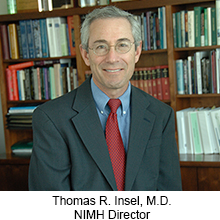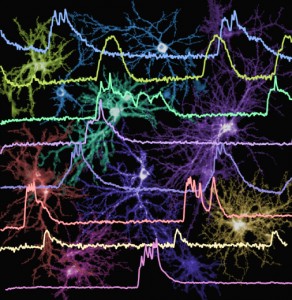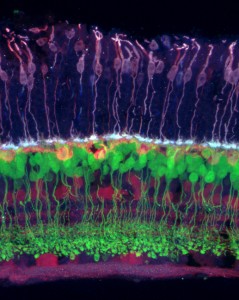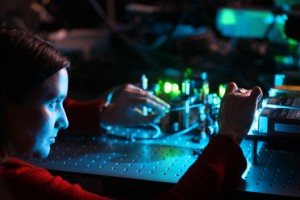NIH Awards $46 Million For Research On Visualizing The Brain In Action

The National Institutes of Health has announced its first wave of investments totaling $46 million in fiscal year ’14 funds to support the goals of the Brain Research through Advancing Innovative Neurotechnologies (BRAIN) Initiative. The funding will enable more than 100 investigators in 15 states and several countries to work on developing new tools and technologies to enhance understanding of neural circuit function and capture a dynamic view of the brain in action. It is anticipated that these new tools and this deeper understanding will ultimately catalyze new treatments and cures for devastating brain disorders and diseases such as Alzheimer’s Disease. The sum total brain disorders and diseases are estimated by the World Health Organization to affect more than one billion people worldwide.
“The human brain is the most complicated biological structure in the known universe. We’ve only just scratched the surface in understanding how it works or, unfortunately, doesn’t quite work when disorders and disease occur,” says NIH Director Francis S. Collins, M.D., P h.D, in a release. “There’s a big gap between what we want to do in brain research and the technologies available to make exploration possible. These initial awards are part of a 12-year scientific plan focused on developing the tools and technologies needed to make the next leap in understanding the brain. This is just the beginning of an ambitious journey and were excited about the possibilities.”
h.D, in a release. “There’s a big gap between what we want to do in brain research and the technologies available to make exploration possible. These initial awards are part of a 12-year scientific plan focused on developing the tools and technologies needed to make the next leap in understanding the brain. This is just the beginning of an ambitious journey and were excited about the possibilities.”
Creating a wearable scanner to image the human brain in motion, using lasers to guide nerve cell firing, recording the entire nervous system in action, stimulating specific circuits with radio waves, and identifying complex circuits with DNA barcodes are among the 58 projects announced this week. The majority of the NIH grants will focus on developing transformative technologies that will accelerate fundamental neuroscience research and include:
• Classifying the myriad cell types in the brain
• Producing tools and techniques for analyzing brain cells and circuits
• Treating next-generation human brain imaging technology
• Developing methods for large-scale recordings of brain activity
• Integrating experiments with theories and models to understand the functions of specific brain circuits.

Photo Caption: To study how sensory information influences motor activity, scientists will watch brain circuits in fruit flies fluorescently light up as they move through the environment and process visual and odorant cues. Image Credit: Marie Suver, Ph.D. and Ainul Huda, University of Washington and Michael H. Dickinson, Ph.D., California Institute of Technology
 “How do the billions of cells in our brain control our thoughts, feelings, and movements? That’s ultimately what the BRAIN Initiative is about,” says Thomas R. Insel, M.D., director of the NIH’s National Institute of Mental Health. “Understanding this will greatly help us meet the rising challenges that brain disorders pose for the future health of the nation.
“How do the billions of cells in our brain control our thoughts, feelings, and movements? That’s ultimately what the BRAIN Initiative is about,” says Thomas R. Insel, M.D., director of the NIH’s National Institute of Mental Health. “Understanding this will greatly help us meet the rising challenges that brain disorders pose for the future health of the nation.

Photo Caption: Scientists funded by the NIH BRAIN Initiative will develop tools to simultaneously watch the unique firing patterns of many neurons in hopes of classifying them based on physical characteristics, such as size and shape, and functional characteristics, such as patterns of electrical activity. Credit: Vincent Pieribone, Ph.D., John B. Pierce Laboratory, Inc
Last year, President Obama launched the BRAIN Initiative as a large-scale effort to equip researchers with fundamental insights necessary for treating a wide variety of brain disorders like Alzheimer’s, schizophrenia, autism, epilepsy, and traumatic brain injury. Four federal agencies: NIH, the National Science Foundation, the Food and Drug Administration and the Defense Advanced Research Projects Agency, stepped up to the grand challenge and committed more than $110 million to the Initiative for fiscal year 2014. Planning for the NIH component of the BRAIN initiative is guided by the long-term scientific plan, BRAIN 2025: A Scientific Vision that details seven high-priority research areas.
The Brain Research through Advancing Innovative Neurotechnologies (BRAIN) Initiative is part of a new Presidential focus aimed at revolutionizing scientists’ understanding of the human brain. By accelerating the development and application of innovative technologies, researchers will be able to produce a revolutionary new dynamic picture of the brain that, for the first time, shows how individual cells and complex neural circuits interact in both time and space. Long desired by researchers seeking new ways to treat, cure, and even prevent brain disorders, this picture will fill major gaps in our current knowledge and provide unprecedented opportunities for exploring exactly how the brain enables the human body to record, process, utilize, store, and retrieve vast quantities of information, all at the speed of thought.
“We are at a critical juncture for brain research, and these audacious projects are from some of the brightest researchers in neuroscience collaborating with physicists and engineers,” says Story Landis, Ph.D. , director of the NIH’s National Institute of Neurological Disorders and Stroke.
For more information about the BRAIN Initiative, visit:
https://www.braininitiative.nih.gov
The National Institutes of Health (NIH) includes 27 Institutes and Centers and is a component of the U.S. Department of Health and Human Services. NIH is the primary federal agency conducting and supporting basic, clinical, and translational medical research, and is investigating the causes, treatments, and cures for both common and rare diseases.
NIH is the largest source of funding for medical research in the world, creating hundreds of thousands of high-quality jobs by funding thousands of scientists in universities and research institutions in every state across America and around the globe.
The NIH’s 27 Institutes and Centers, each has a specific research agenda, often focusing on particular diseases or body systems. NIH leadership plays an active role in shaping the agency’s research planning, activities, and outlook.
NIH is responsive to Congressional legislation that adjusts NIH’s programs to meet changing research needs. As a result of the NIH reauthorization process, NIH is able to respond strategically in an era when medical research requires constant innovation and increased interdisciplinary efforts
 Photo Caption: Scientists funded by the NIH BRAIN Initiative hope to diagram all of the circuits in the brain. One group will attempt to identify all of the connections among the retina’s ganglion cells (red), which transmit visual information from bipolar cells (green) and photoreceptors (purple) to the brain. Image Credit: Josh Morgan, Ph.D. and Rachel Wong, Ph.D., University of Washington.
Photo Caption: Scientists funded by the NIH BRAIN Initiative hope to diagram all of the circuits in the brain. One group will attempt to identify all of the connections among the retina’s ganglion cells (red), which transmit visual information from bipolar cells (green) and photoreceptors (purple) to the brain. Image Credit: Josh Morgan, Ph.D. and Rachel Wong, Ph.D., University of Washington.
More than 80 percent of the NIH’s budget goes to more than 300,000 research personnel at over 2,500 universities and research institutions. In addition, about 6,000 scientists work in NIHs own Intramural Research laboratories, most of which are on the NIH main campus in Bethesda, Maryland. The main campus is also home to the NIH Clinical Center, the largest hospital in the world totally dedicated to clinical research.
For more information about NIH and its programs, visit:
https://www.nih.gov/about/
Sources:
National Institutes of Health
Brain Research through Advancing Innovative Neurotechnologies (BRAIN) Initiative
Image Credits:
National Institutes of Health
Marie Suver, Ph.D. and Ainul Huda, University of Washington and Michael H. Dickinson, Ph.D., California Institute of Technology
Vincent Pieribone, Ph.D., John B. Pierce Laboratory, Inc.
Josh Morgan, Ph.D. and Rachel Wong, Ph.D., University of Washington.







